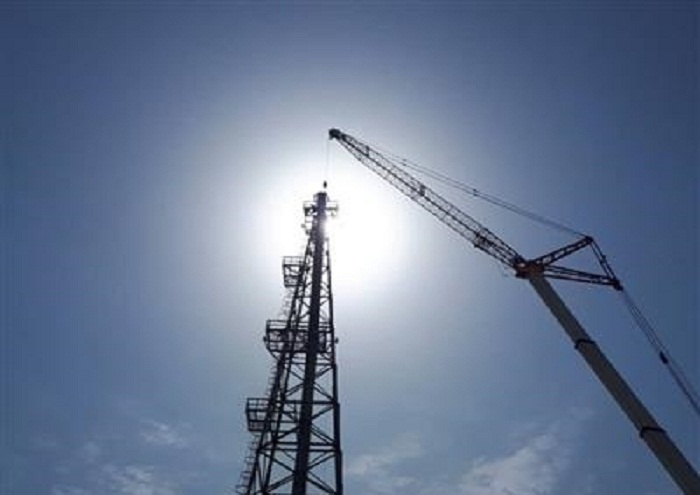Thanks to existing technologies, it would be possible to raise oil recovery rate from different reservoirs to over 80%.
One of reservoirs that Iran has specifically counted on is Bangestan in the Mansouri oil field. Mansouri was among fields proposed for development under the Iran Petroleum Contract (IPC) model, the restructured model of oil contract.
Over recent years, production from the Bangestan reservoir of Mansouri has been studied by Committee of Advisors at the Directorate of Reservoirs of National Iranian Oil Company (NIOC).
According to NIOC Directorate of Corporate Planning, various scenarios envisaged for enhanced recovery from this field include natural depletion, gas injection and water injection with a view to studying various parameters including output flow and downhole pressure.
This field enjoys very good potential for production and development. More studies are needed in the future to study the Bangestan reservoir of Mansouri field. These studies focus on artificial lifting, hydraulic fracturing and enhanced oil recovery (EOR) methods.
Iran’s petroleum industry and particularly National Iranian South Oil Company (NISOC), over recent years, has focused on the development of Mansouri in order to increase its crude oil output and enhance its processing capacity. The project is 97.5% complete now. The only remaining section from phase 1 of Mansouri field development is the completion of production and desalting plant.
The high rate of recovery from Mansouri has added to the significance of this field. The latest studies indicate that the average rate of recovery from oil fields in Iran is about 28%, while the Asmari reservoir of Mansouri has a recovery rate of 47%, which is indicative of the high potential of this oil field.
The Mansouri field is located 60 kilometers south of Ahvaz (the provincial capital of Khuzestan), 50 kilometers west of Mahshahr Port and 40 kilometers east of Ab Teimour field. Discovered in 1963, the Mansouri field started production in 1973.
The first well in the Mansouri field was drilled in 1963 to allow for oil recovery from the Asmari reservoir. Oil production from the Bangestan reservoir began in 1974 after drilling Well No. 2.
After the establishment of the Mansouri production unit in 1979, the processing of the Bangestan oil was transferred from the Ahvaz production unit to the Mansouri production unit.
The Mansouri field is administered by Karoun Oil and Gas Production Company that is the largest NISOC subsidiary with an output of over 1 mb/d.
The Bangestan reservoir has a production unit with a rated capacity of 75,000 b/d, a desalting unit with a rated capacity of 35,000 b/d and a gas compressor unit with a rated capacity of 30,000 b/d.
Bangestan is estimated to hold 15 billion barrels of oil in place with an output of 60,000 b/d that may be increased to 79,000 b/d. So far, 347 million barrels of oil has been extracted from the Bangestan reservoir.
The average production from each onshore oil well has fallen to 2,000 b/d, down from 26,000 b/d recorded between 1970 and 1972. There were a total of 270 wells when Iran was supplying its maximum oil output. There are currently over 1,500 oil wells.
According to official data, the average oil production rate in Iran stands at 24%, while in many countries it varies between 45% and 65%.
Iranian Petroleum Ministry officials say the average recovery rate from oil fields in Iran stands at around 24%, ranging from 7% in Soroosh oil field to 35% in Ahvaz oil field.
Iran targets Maximum Efficient Rate (MER). MER means the maximum sustainable daily oil or gas withdrawal rate from a reservoir which will permit economic development and depletion of that reservoir without detriment to ultimate recovery.
If oil is extracted from a reservoir at a rate greater than the maximum efficient rate of recovery, then the natural pressure of the reservoir will decline resulting in a decrease in the amount of oil ultimately recoverable.
MER is also commonly used to denote the rate of field production that can achieve the maximum financial return from the reservoir operation. However, the figures of two rates hardly coincide.
In the 1940s, the average production from Iranian oil wells was said to stand at 18,000 b/d. After so many years, the figure is down to 2,000 b/d.
As Iran's oil wells enter their second half of life, between 330,000 and 350,000 barrels per year of oil is lost in onshore wells.
Therefore, enhanced recovery from mature reservoirs like Bangestan is essential for Iran’s petroleum industry.
Courtesy of Iran Petroleum


Your Comment